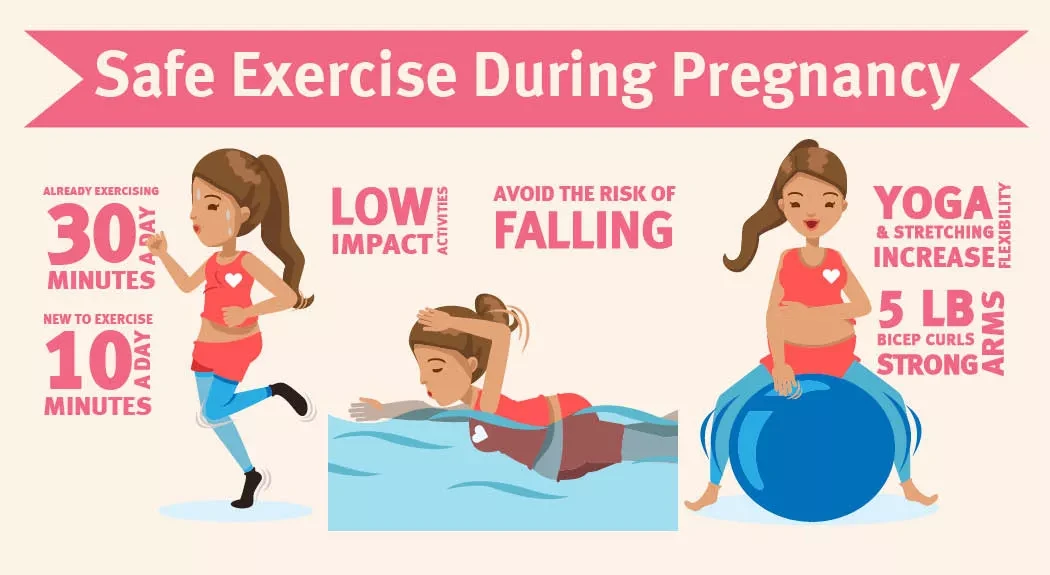Exercise is an important part of a healthy lifestyle, especially during and after pregnancy. It can help you maintain a healthy weight, reduce stress, improve your mood, and even prepare your body for labor. However, it’s essential to be mindful of the types of exercises you do during and after pregnancy to ensure the safety of both you and your baby.
Consult with your healthcare provider
Before starting any exercise routine during or after pregnancy, it’s crucial to consult with your healthcare provider. They can provide personalized recommendations based on your individual health and pregnancy status. They may also be able to suggest specific exercises that can help address any particular concerns you may have.
Choose low-impact exercises
During pregnancy, it’s best to focus on low-impact exercises that are gentle on your body. Walking, swimming, prenatal yoga, and stationary cycling are all excellent options. These exercises can help you stay active without putting too much stress on your joints and muscles.
Listen to your body
During pregnancy, your body goes through significant changes, and it’s essential to listen to how you’re feeling. If you experience any pain, dizziness, or shortness of breath while exercising, stop immediately and rest. These could be signs that you’re overexerting yourself, and it’s crucial to take it easy.
Avoid exercises that put pressure on your abdomen
Some exercises, such as sit-ups, crunches, and deep knee bends, can put pressure on your abdomen and pelvic floor muscles, which can be harmful during pregnancy. Avoid these exercises and opt for safer alternatives that target the same muscle groups without putting undue stress on your body.
Stay hydrated
Staying hydrated is essential during and after pregnancy, especially when exercising. Drink plenty of water before, during, and after your workout to prevent dehydration. Dehydration can lead to complications, such as overheating and preterm labor, so it’s crucial to stay hydrated at all times.
Gradually increase intensity
If you were active before pregnancy, you may be able to maintain a higher level of intensity during your workouts. However, it’s essential to gradually increase the intensity of your exercises to ensure your safety and the safety of your baby. Overexerting yourself can lead to complications, so take it slow and listen to your body.
Postpartum exercise
After giving birth, it’s essential to wait until you’ve been cleared by your healthcare provider before starting any exercise routine. Your body needs time to recover from childbirth, and it’s crucial to give yourself the time you need to heal properly. Once you’ve been cleared, start slowly with gentle exercises and gradually increase the intensity as you feel comfortable.
Focus on core and pelvic floor exercises
After pregnancy, focus on core and pelvic floor exercises to help strengthen your abdominal muscles and pelvic floor. These exercises can help prevent issues such as diastasis recti and urinary incontinence, which are common after childbirth. Work with a qualified trainer or physical therapist to ensure you’re performing these exercises correctly.
Be patient with yourself
After giving birth, your body goes through significant changes, and it’s essential to be patient with yourself as you recover. Don’t push yourself too hard or compare yourself to others. Every woman’s body is different, and it’s important to focus on your own journey to recovery and wellness.
By following these tips, you can safely exercise during and after pregnancy to maintain your health and well-being. Remember to consult with your healthcare provider before starting any exercise routine and listen to your body throughout your pregnancy and postpartum journey. With the right precautions and mindset, you can stay active and healthy during this exciting time in your life.

